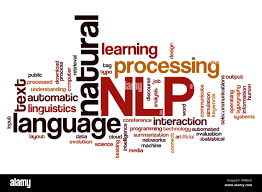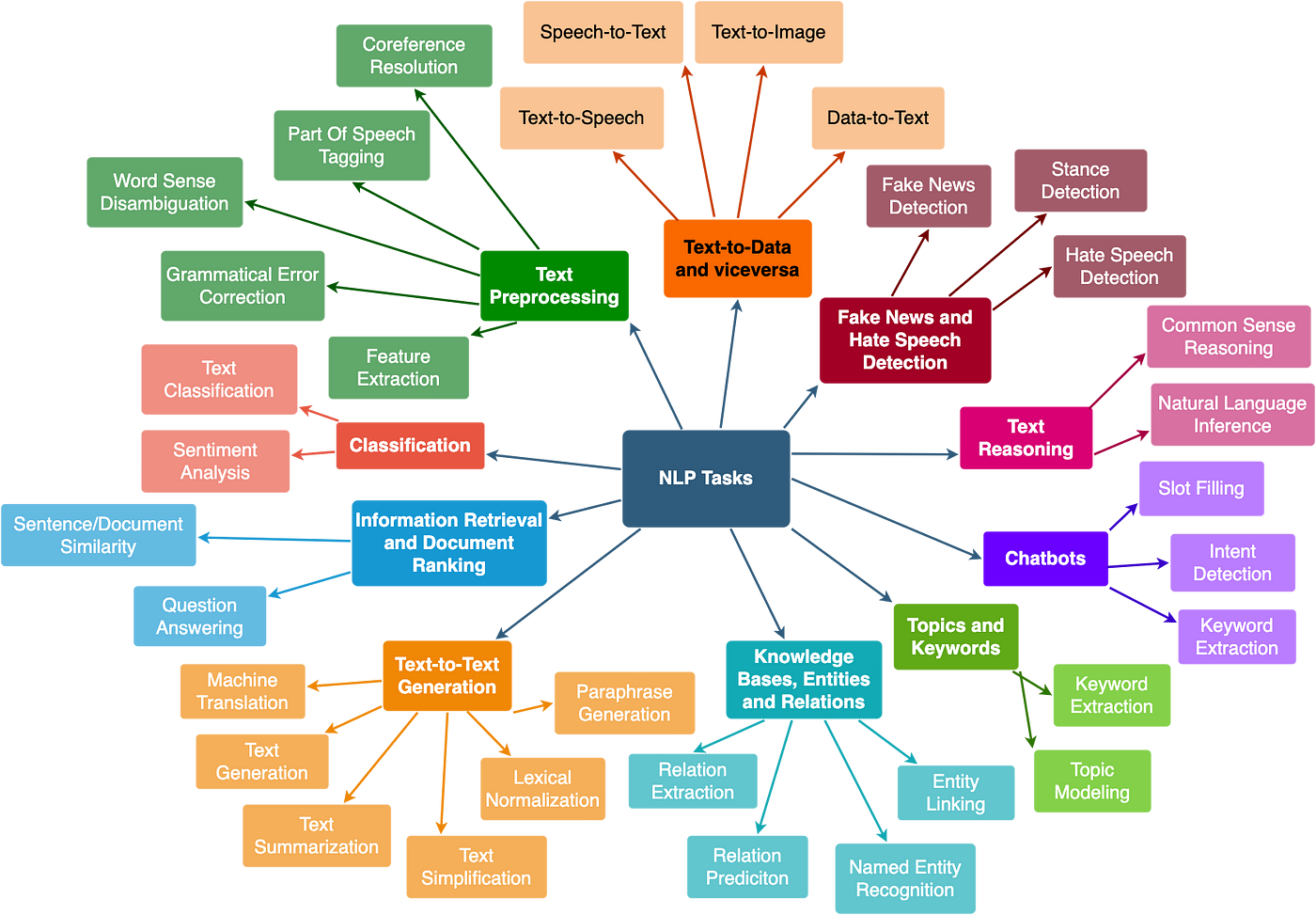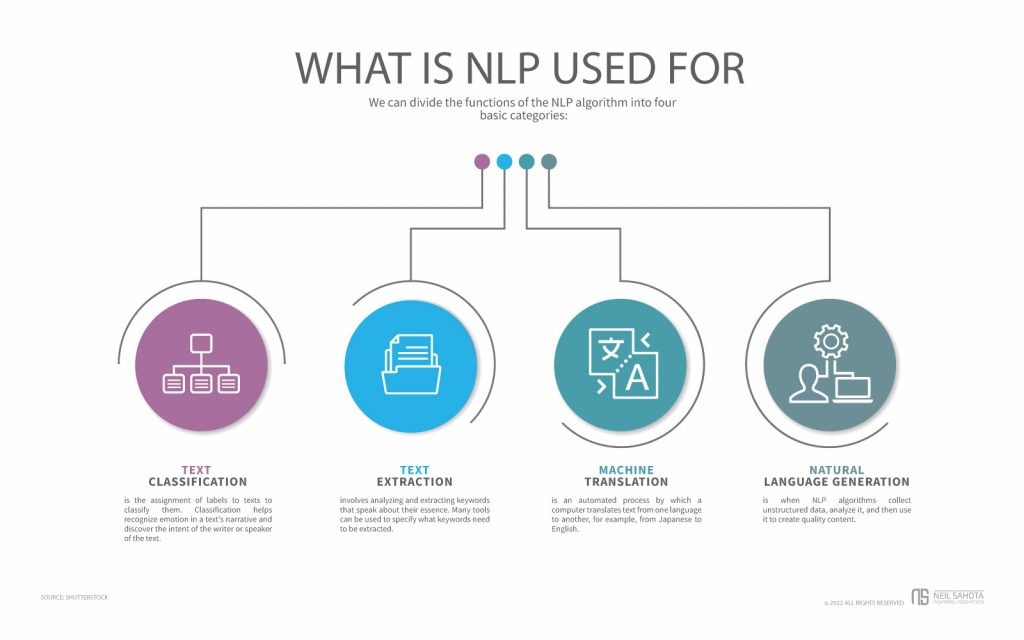
What is natural language processing?

Natural language processing (NLP) refers to the branch of computer science—and more specifically, the branch of artificial intelligence or AI—concerned with giving computers the ability to understand text and spoken words in much the same way human beings can.
NLP combines computational linguistics—rule-based modeling of human language—with statistical, machine learning, and deep learning models. Together, these technologies enable computers to process human language in the form of text or voice data and to ‘understand’ its full meaning, complete with the speaker or writer’s intent and sentiment.
NLP drives computer programs that translate text from one language to another, respond to spoken commands, and summarize large volumes of text rapidly—even in real time. There’s a good chance you’ve interacted with NLP in the form of voice-operated GPS systems, digital assistants, speech-to-text dictation software, customer service chatbots, and other consumer conveniences. But NLP also plays a growing role in enterprise solutions that help streamline business operations, increase employee productivity, and simplify mission-critical business processes.
NLP tasks

Human language is filled with ambiguities that make it incredibly difficult to write software that accurately determines the intended meaning of text or voice data. Homonyms, homophones, sarcasm, idioms, metaphors, grammar and usage exceptions, variations in sentence structure—these just a few of the irregularities of human language that take humans years to learn, but that programmers must teach natural language-driven applications to recognize and understand accurately from the start, if those applications are going to be useful.
Several NLP tasks break down human text and voice data in ways that help the computer make sense of what it's ingesting. Some of these tasks include the following:
-Speech recognition, also called speech-to-text, is the task of
reliably converting voice data into text data. Speech recognition is required for
any application that follows voice commands or answers spoken questions. What makes
speech recognition especially challenging is the way people talk—quickly, slurring
words together, with varying emphasis and intonation, in different accents, and
often using incorrect grammar.
-Part of speech tagging, also called grammatical tagging, is the process of
determining the part of speech of a particular word or piece of text based on its
use and context. Part of speech identifies ‘make’ as a verb in ‘I can make a paper
plane,’ and as a noun in ‘What make of car do you own?’
-Word sense disambiguation is the selection of the meaning of a word with
multiple meanings through a process of semantic analysis that determine the word
that makes the most sense in the given context. For example, word sense
disambiguation helps distinguish the meaning of the verb 'make' in ‘make the grade’
(achieve) vs. ‘make a bet’ (place).
-Named entity recognition, or NEM, identifies words or phrases as useful
entities. NEM identifies ‘Kentucky’ as a location or ‘Fred’ as a man's name.
Co-reference resolution is the task of identifying if and when two words refer to
the same entity. The most common example is determining the person or object to
which a certain pronoun refers (e.g., ‘she’ = ‘Mary’), but it can also involve
identifying a metaphor or an idiom in the text (e.g., an instance in which 'bear'
isn't an animal but a large hairy person).
-Co-reference resolution is the task of identifying if and when two words
refer to the same entity. The most common example is determining the person or
object to which a certain pronoun refers (e.g., ‘she’ = ‘Mary’), but it can also
involve identifying a metaphor or an idiom in the text (e.g., an instance in which
'bear' isn't an animal but a large hairy person).
-Sentiment analysis attempts to extract subjective qualities—attitudes,
emotions, sarcasm, confusion, suspicion—from text.
-Natural language generation is sometimes described as the opposite of speech
recognition or speech-to-text; it's the task of putting structured information into
human language.
NLP tools and approaches

Python and the Natural Language Toolkit (NLTK)
The Python programing language provides a wide range of tools and libraries for attacking specific NLP tasks. Many of these are found in the Natural Language Toolkit, or NLTK, an open source collection of libraries, programs, and education resources for building NLP programs.
The NLTK includes libraries for many of the NLP tasks listed above, plus libraries for subtasks, such as sentence parsing, word segmentation, stemming and lemmatization (methods of trimming words down to their roots), and tokenization (for breaking phrases, sentences, paragraphs and passages into tokens that help the computer better understand the text). It also includes libraries for implementing capabilities such as semantic reasoning, the ability to reach logical conclusions based on facts extracted from text.
Statistical NLP, machine learning, and deep learning
The earliest NLP applications were hand-coded, rules-based systems that could perform certain NLP tasks, but couldn't easily scale to accommodate a seemingly endless stream of exceptions or the increasing volumes of text and voice data.
Enter statistical NLP, which combines computer algorithms with machine learning and deep learning models to automatically extract, classify, and label elements of text and voice data and then assign a statistical likelihood to each possible meaning of those elements. Today, deep learning models and learning techniques based on convolutional neural networks (CNNs) and recurrent neural networks (RNNs) enable NLP systems that 'learn' as they work and extract ever more accurate meaning from huge volumes of raw, unstructured, and unlabeled text and voice data sets.
NLP use cases

Natural language processing is the driving force behind machine intelligence in many modern real-world applications. Here are a few examples:
- Spam detection: You may not think of spam detection as an NLP solution, but
the best
spam detection technologies use NLP's text classification capabilities to scan
emails for language that often indicates spam or phishing. These indicators can
include overuse of financial terms, characteristic bad grammar, threatening
language, inappropriate urgency, misspelled company names, and more. Spam detection
is one of a handful of NLP problems that experts consider 'mostly solved' (although
you may argue that this doesn’t match your email experience).
- Machine translation: Google Translate is an example of widely available NLP
technology at work. Truly useful machine translation involves more than replacing
words in one language with words of another. Effective translation has to capture
accurately the meaning and tone of the input language and translate it to text with
the same meaning and desired impact in the output language. Machine translation
tools are making good progress in terms of accuracy. A great way to test any machine
translation tool is to translate text to one language and then back to the original.
- An oft-cited classic example: Not long ago, translating “The spirit is
willing but
the flesh is weak” from English to Russian and back yielded “The vodka is good but
the meat is rotten.” Today, the result is “The spirit desires, but the flesh is
weak,” which isn’t perfect, but inspires much more confidence in the
English-to-Russian translation.
- Virtual agents and chatbots: Virtual agents such as Apple's Siri and
Amazon's Alexa
use speech recognition to recognize patterns in voice commands and natural language
generation to respond with appropriate action or helpful comments. Chatbots perform
the same magic in response to typed text entries. The best of these also learn to
recognize contextual clues about human requests and use them to provide even better
responses or options over time. The next enhancement for these applications is
question answering, the ability to respond to our questions—anticipated or not—with
relevant and helpful answers in their own words.
- Social media sentiment analysis: NLP has become an essential business tool
for
uncovering hidden data insights from social media channels. Sentiment analysis can
analyze language used in social media posts, responses, reviews, and more to extract
attitudes and emotions in response to products, promotions, and events–information
companies can use in product designs, advertising campaigns, and more.
Text summarization: Text summarization uses NLP techniques to digest huge volumes of
digital text and create summaries and synopses for indexes, research databases, or
busy readers who don't have time to read full text. The best text summarization
applications use semantic reasoning and natural language generation (NLG) to add
useful context and conclusions to summaries.